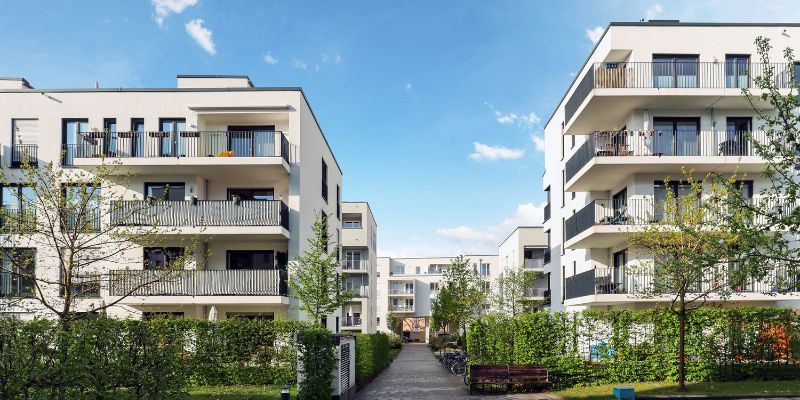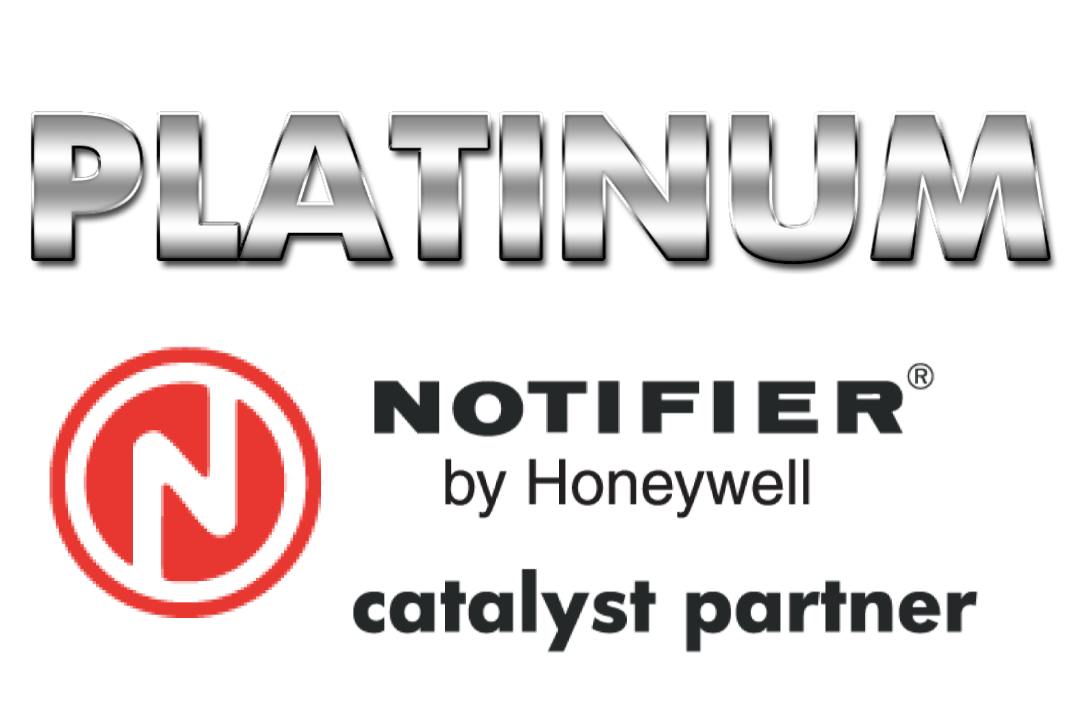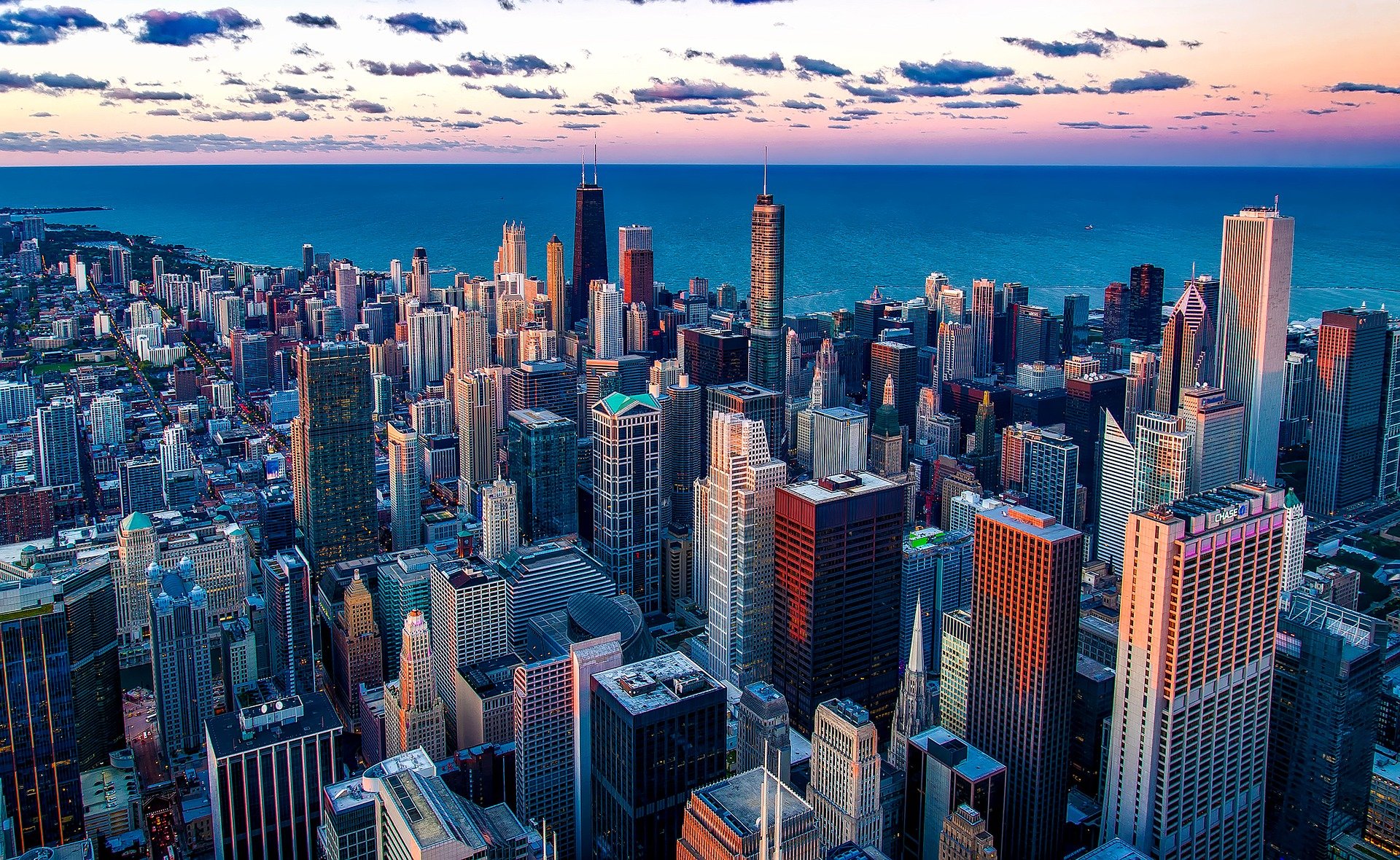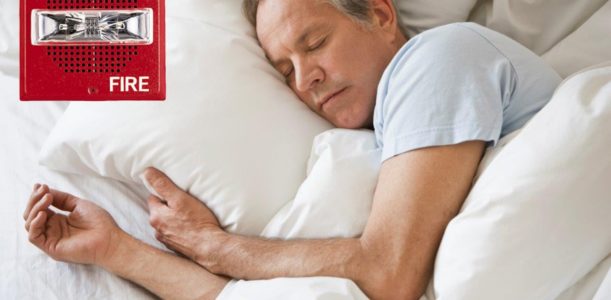
This article was published on 3-1-17 and updated on 1-14-25
Protecting the lives of occupants and families in multifamily residential buildings is an extremely important obligation for building owners and must include ADA compliance. Ensuring compliance with the Americans with Disabilities Act (ADA) must be a top priority for all multifamily building developers and owners. Working with an experienced commercial fire alarm consultant can help building owners and contractors ensure compliance with all building and safety codes, including ADA compliance.
ADA Compliance in Multifamily Buildings
ADA compliance in multifamily buildings goes beyond legal obligations—it is essential for creating safe, accessible, and inclusive housing for all residents. Fire alarm systems are crucial in meeting ADA requirements, particularly for residents with hearing impairments. By integrating accessible fire alarm technologies like high-candela strobes and audible alarms, property managers can safeguard lives and provide peace of mind to all occupants. These fire alarm systems ensure timely alerts during emergencies, meeting ADA and fire safety standards.
Building Classifications and Applicable Codes for Multifamily Buildings
ADA compliance in multifamily residential buildings often depends on the property’s classification and the specific applicable codes. Residential buildings are categorized into R1, R2, R3, and R4 occupancy classifications:
- R1: Residential occupancies, such as hotels or boarding houses, where occupants are transient and do not stay for extended periods.
- R2: Apartments and condominiums, where occupants are primarily permanent residents.
- R3: Single-family homes or small boarding houses that do not fit into R1 or R2 categories.
- R4: Assisted living and residential care facilities for up to 16 occupants.
Understanding the classification of a property is critical, as it determines the specific fire safety and ADA requirements.
Building Safety Codes Related to ADA Compliance in Multifamily Buildings
Several building and fire safety codes cover the Americans with Disability Act to ensure ADA compliance in multifamily buildings.
Key Codes and Standards:
- NFPA 72: National Fire Alarm and Signaling Code
Provides comprehensive guidelines for fire alarm system design, installation, and performance, including requirements for ADA-compliant notification systems. - International Building Code (IBC)
Defines structural and safety requirements for all residential buildings, ensuring that fire alarms and accessible features align with ADA guidelines. - International Fire Code (IFC)
Outlines the fire prevention measures required in multifamily buildings, including provisions for emergency responder communication systems and occupant safety. - NFPA 101: Life Safety Code
Addresses means of egress, fire protection, and life safety in residential buildings, emphasizing the inclusion of ADA-compliant features. - Americans with Disabilities Act (ADA)
Mandates accessible design and safety features, ensuring equitable living conditions for individuals with disabilities, including implementing visual and audible fire alarms in multifamily residences.
By adhering to these codes and understanding the building classifications, developers and property managers can ensure compliance and accessible fire alarm systems for apartments.
Determining ADA Unit Requirements
Ensuring that multifamily residential buildings meet ADA requirements involves careful planning and adherence to specific guidelines set forth by national and local codes.
Guidelines for ADA-Compliant Units
The number of ADA-compliant units in a multifamily residential building depends on the building size and occupancy classification. National and local building codes, including the International Building Code (IBC) and the Americans with Disabilities Act (ADA), provide guidelines to determine how many units must meet accessibility requirements. Typically, a percentage of units must be designed or adaptable to accommodate individuals with disabilities, including those who are hearing or visually impaired.
Role of Architects and Building Owners
Architects and building owners must identify which units will meet ADA requirements. These decisions are influenced by building layout, unit variations, and anticipated tenant needs. While architects ensure code compliance through design, building owners are responsible for implementing and maintaining ADA-compliant features in designated units. Collaborative planning is essential to meet all legal requirements while addressing tenant safety and accessibility.
Considering Layouts and Unit Types
Including a mix of unit types when selecting ADA-compliant apartments is important, ensuring accessibility across various layouts. This allows tenants with disabilities to have equitable access to different unit sizes and configurations, promoting inclusivity. Careful consideration of unit placement also ensures that accessible features align with building design and operational efficiency.
Strobe and Fire Alarm Requirements for ADA Units
Proper placement and integration of strobes in ADA-compliant units are essential to provide timely and effective emergency visual alarms for hearing-impaired residents.
Locations for Strobes
ADA strobe requirements state that apartments must have high-candela strobes installed in critical areas to provide visual alerts to occupants with hearing impairments. Required locations include:
- Bedrooms
- Bathrooms
- Living rooms
These strobes are vital for ensuring occupants receive timely alerts during an emergency, regardless of their location within the unit.
Device Integration
Smoke detectors, carbon monoxide detectors, or combination devices within ADA units should include dry contact relays. These relays enable the devices to communicate with the base building’s fire alarm system, allowing centralized monitoring and control of emergency alerts.
NFPA Requirements for Strobe Placement
The National Fire Protection Association (NFPA 72) specifies precise placement requirements for smoke and carbon monoxide detectors:
- Smoke Detectors: Required in all bedrooms and common areas within 15 feet of bedroom doors.
- Carbon Monoxide Detectors: Required outside all sleeping rooms within 15 feet of bedroom doors.
All detectors must be interconnected so that activating one device triggers alarms throughout the unit, ensuring comprehensive coverage.
Supervised Devices
Some local ordinances require supervised smoke detectors, which are monitored by the building’s fire alarm panel. These devices must:
- Use a 24VDC power source from the fire panel.
- Provide full communication of their status (e.g., active, trouble, or offline) to the fire panel.
- Meet the NFPA 72 audibility requirement of 75 dB at the pillow, ensuring that alarms are loud enough to wake occupants during an emergency.
Strobe Circuitry and Operation
ADA strobe requirements require dedicated 24VDC synchronized circuits to function independently of corridor notifications. This setup ensures strobes activate only under specific conditions and not during unrelated events in other areas of the building.
Strobes can be programmed to activate based on the following conditions:
- Water Flow Alarms
- Manual Pull Stations
- Corridor Smoke Detection
- Elevator Recalls
- Apartment-Specific Smoke or Carbon Monoxide Alarms
Proper wiring and configuration of these systems are critical to meeting ADA and NFPA requirements, ensuring that strobes operate reliably in emergencies while minimizing false activations.
HRSS/SMG helps property managers and building owners ensure that fire alarm systems in ADA units are compliant, reliable, and capable of providing visual and audible alerts to residents with disabilities.
Adaptable Units and Infrastructure
Adaptable units are apartments pre-equipped with the necessary infrastructure to be converted into ADA-compliant units as needed. This includes the installation of conduits, wiring, and power sources to support future upgrades for residents with disabilities and ensure adaptable units’ fire safety compliance.
The International Building Code (IBC) specifies that “all dwelling and sleeping units” in R-2 occupancies must meet readiness standards for adaptability. By including these provisions during construction, building owners can ensure flexibility in meeting accessibility needs without requiring major renovations later.
HRSS/SMG supports building owners of multifamily dwellings and electrical and general contractors to ensure complete code compliance with commercial fire alarm system design, products, installation, and comprehensive services.
Integration with Building Fire Alarm Systems
Drawing Examples of Resident Rooms with ADA Requirements
To ensure proper monitoring and operation, ADA-compliant fire alarm systems in individual apartments must be seamlessly integrated with the base building’s fire alarm panel.
- Monitoring Smoke and CO Detectors:
Apartment smoke and carbon monoxide detectors must communicate directly with the base building fire alarm panel. This monitoring ensures that any activation within the apartment is immediately registered in the main system, triggering appropriate responses. - Strobe Activation Commands:
The fire alarm panel sends on/off commands to apartment strobes. This centralized control ensures that strobes respond to specific conditions, such as smoke or CO detection, without unnecessary activations. - Wiring and Operational Differences:
Due to their unique activation sequences, apartment-specific strobes must operate independently of corridor notification devices. Dedicated circuits and synchronized power sources are essential to meet these operational requirements, ensuring that each apartment’s ADA-compliant system functions reliably and as intended.
Responsibilities of ADA Compliant Building Owners and Managers
Building owners and managers are critical in ensuring compliance with multifamily buildings’ ADA and fire safety standards. Their responsibilities include:
- Responding to Tenant Needs:
Owners must address tenant requests for visual or auditory fire alarm solutions, ensuring the safety of individuals with hearing or visual impairments. - Maintaining Compliance:
Regular testing, maintenance, and upgrades of fire alarm systems are essential to stay compliant with current ADA, IBC, and NFPA standards. This proactive approach prevents potential penalties and ensures resident safety. - Collaborating with Experts:
HRSS/SMG offers specialized expertise in designing and maintaining ADA-compliant fire alarm systems. From initial planning to ongoing support, HRSS/SMG provides tailored solutions to meet both legal requirements and tenant needs.
Fire detection systems that meet ADA compliance in multifamily residential buildings are essential for legal adherence and ensuring the safety and well-being of all residents. By integrating accessible fire alarm systems with features like strobes, supervised detectors, and adaptable infrastructure, property managers can create inclusive living spaces that prioritize safety.
HRSS/SMG specializes in designing customized, compliant, commercial fire alarm systems. Our expert team provides innovative fire and life safety solutions to meet the highest standards of accessibility and safety. Contact us today to ensure your building is fully equipped to protect all residents with ADA compliance in multifamily buildings.



